Phonics Teaching Resources
Make teaching phonics easy with printable phonics worksheets, activities, games and more designed for elementary ELA and ELAR teachers.
This collection of curriculum-aligned teaching resources has been carefully reviewed by our expert teaching team to make sure every resource is classroom-ready — so we can make your lesson planning easier!
New to teaching phonics, or just looking for new ways to engage your students? Read on for a primer from our teacher team!
What Is Phonics?
You've likely heard the word "phonics" thousands of times throughout your own education and maybe on one of those old as from the '90s. But what is phonics, exactly?
Phonics is technically defined as the systematic instruction of the relationships between letters and sounds in written language. But that's a mouthful, isn't it? More simply, phonics is the word we use to refer to the method of teaching reading by focusing on the relationship between written letters and the sounds they represent.
In phonics, kids learn how to decode written words by recognizing the sound-symbol correspondence.
Phonics vs. Phonemic Awareness
When we start talking about letters and their sounds, we start to wander into phonemic awareness territory. So what's the difference?
The words phonics and phonemic are similar, and the two concepts are — surprise, surprise — related. But there are key differences.
Phonemic awareness is essentially the ability to identify and manipulate individual sounds — aka phonemes — in spoken language. It's those individual sounds and their correspondence to the letter symbols that can be used by kids to then decode written words.
So students learn to recognize the individual sounds of spoken language (phonemes) and how these sounds can be represented by letters (graphemes) in written language. Then they apply this knowledge to decode written words by understanding the sound-symbol correspondence.
Consider this example:
- Let's say your student can identify the separate sounds in a spoken word such as "cat" (i.e., /k/ /a/ /t/). That's phonemic awareness.
- Now let's say you're teaching that same student that the letter "c" represents the /k/ sound and that the letter "a" represents the /a/ sound, and that these sounds combine to form the word "cat." That's phonics!
How to Teach Phonics
OK, you probably already know that phonics is all about teaching word recognition via grapheme-phoneme associations and letter-sound correspondences.
It’s a means of teaching early readers the pieces that make up a word so they can blend them together to decode the English language as readers and writers.
But how do you teach it?
In the earliest stages, phonics instruction typically begins with teaching students the most common letter-sound relationships. You start with consonants, then move on to vowels, then consonant blends.
Students then learn to sound out words by decoding the letters and blending the sounds together to form words.

Phonics Vocabulary Terms
The English language system is one of the hardest to teach and learn, so how do you teach phonics? Let’s start with the phonics vocabulary.
- For starters, there are 26 letters that create approximately 44 phonemes, the word for the individual speech sounds that make up words. Put together, phonemes make words. OK, easy enough, right?
- Well, these phonemes can be written in over more than 200 different letter combinations, known as graphemes. Graphemes can be made up of 1 letter (such as “p” in “pig”), 2 letters (such as “gh” in ghost), 3 letters (such as “igh” in night), or 4 letters (such as “ough” in rough).
- Then there are digraphs or two letters that work together to make one sound — such as “ph” in graph. But wait, isn’t that a grapheme? Yup, a digraph is a type of grapheme.
- So is a trigraph, trigraphs, aka three letters that work together to make one sound, such as “dge” in edge.
- And if you’re teaching phonics, you can’t forget dipthongs, the name for a sound that is formed by the combination of two vowels in a single syllable, such as “ou” in loud.
Most students will spend kindergarten, first, and even second grade getting a handle on all phonics elements!
- Plus Plan
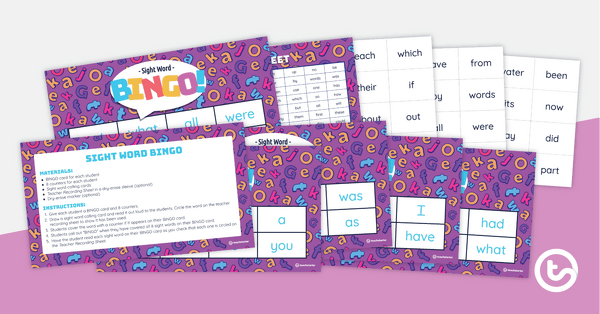
Sight Word BINGO (Fry Word List 1-100 )
A set of 25 BINGO cards to practice reading the first 100 words on the Fry Sight Word List.
- Plus Plan
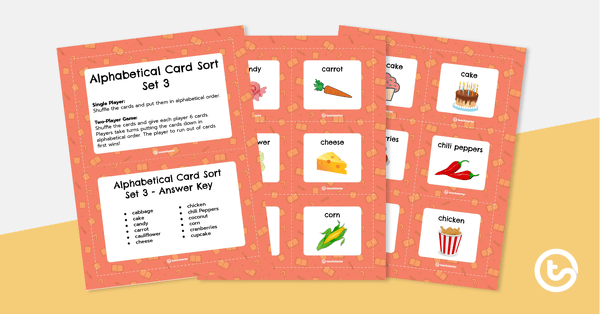
Alphabetical Order Card Sort - Set 3
A set of word cards to practice putting words in alphabetical order.
- Plus Plan
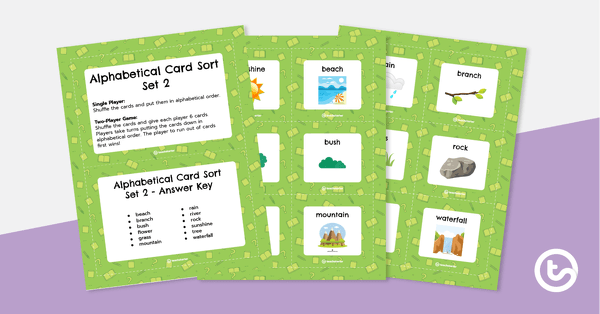
Alphabetical Order Card Sort - Set 2
A set of word cards to practice putting words in alphabetical order.
- Plus Plan
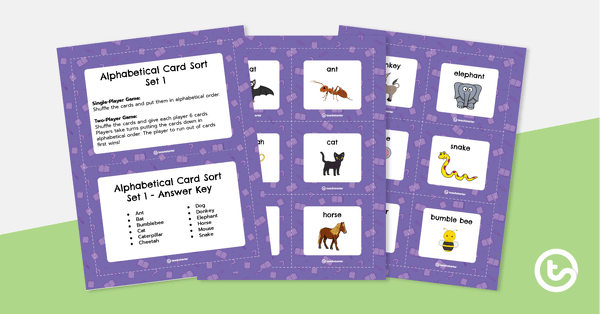
Alphabetical Order Card Sort - Set 1
A set of word cards to practice putting words in alphabetical order.
- Plus Plan
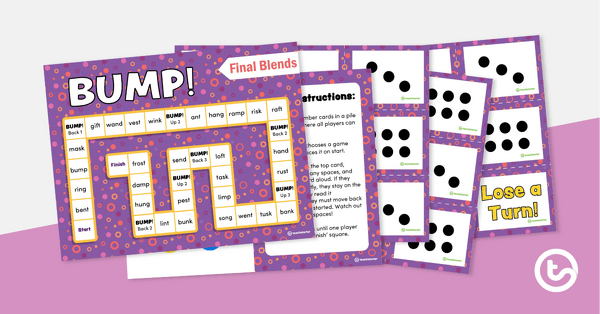
Bump! Final Blends - Board Game
A board game to practice decoding words with a final consonant blend.
- Plus Plan
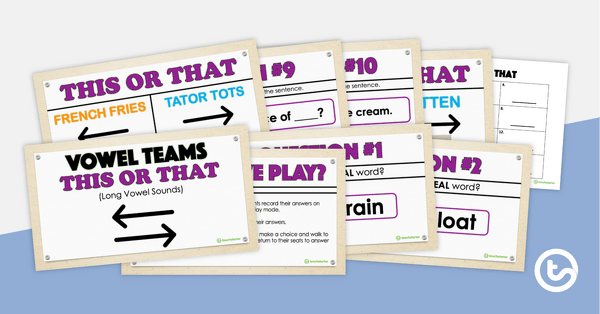
This or That! PowerPoint Game - Vowel Teams
An active PowerPoint game to practice decoding words with vowel teams.
- Plus Plan
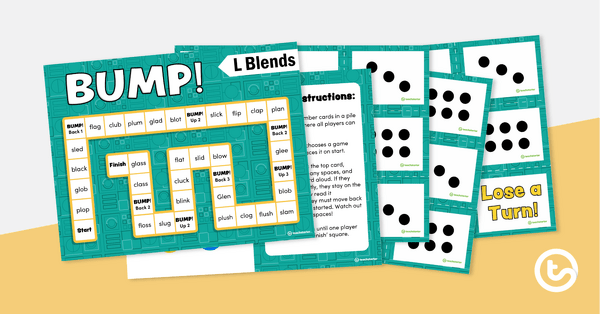
BUMP! L Blends - Board Game
A board game to practice decoding words with an l-blend.
- Plus Plan
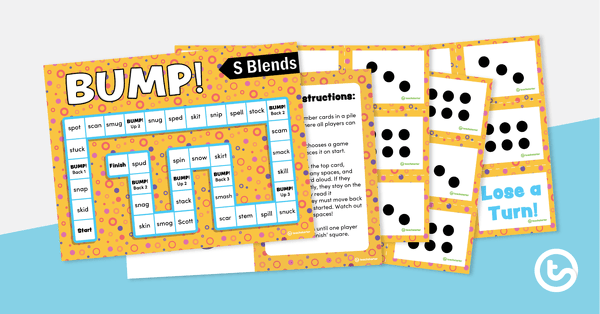
BUMP! S Blends - Board Game
A board game to practice decoding words with an initial s blend.
- Plus Plan

Color by Sight Words - 7 Words - Monkey
A fun coloring activity to use when working with sight words.
- Plus Plan
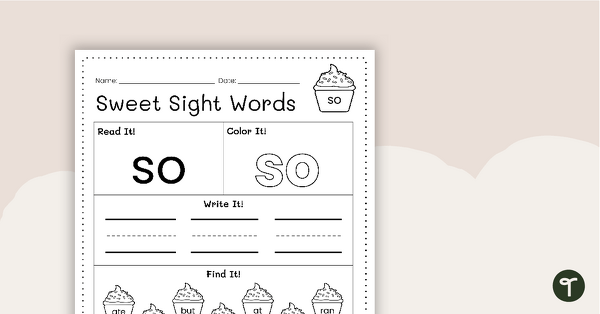
Sweet Sight Words Worksheet - SO
Practice reading, writing, and identifying the high-frequency word “so” from the Kindergarten-level Dolch sight words list.
- Plus Plan
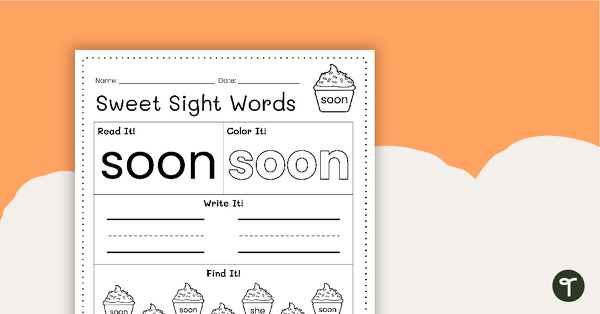
Sweet Sight Words Worksheet - SOON
Practice reading, writing, and identifying the high-frequency word “soon” from the Kindergarten-level Dolch sight words list.
- Plus Plan

Sweet Sight Words Worksheet - SAY
Practice reading, writing, and identifying the high-frequency word “say” from the Kindergarten-level Dolch sight words list.
- Plus Plan
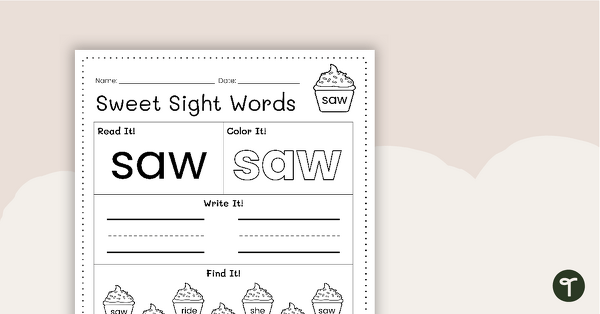
Sweet Sight Words Worksheet - SAW
Practice reading, writing, and identifying the high-frequency word “saw” from the Kindergarten-level Dolch sight words list.
- Plus Plan
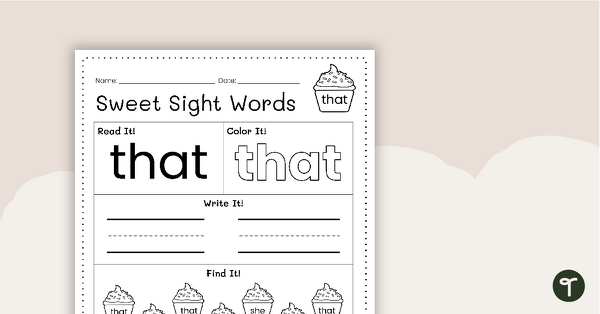
Sweet Sight Words Worksheet - THAT
Practice reading, writing, and identifying the high-frequency word “that” from the Kindergarten-level Dolch sight words list.
- Plus Plan
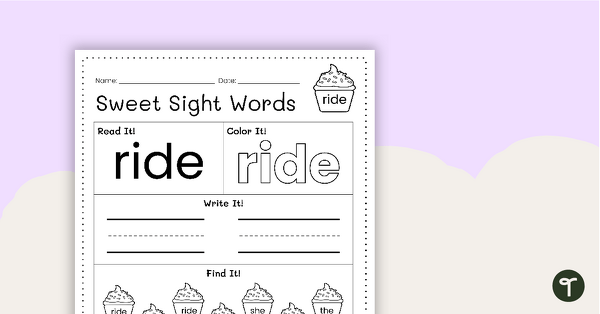
Sweet Sight Words Worksheet - RIDE
Practice reading, writing, and identifying the high-frequency word “ride” from the Kindergarten-level Dolch sight words list.
- Plus Plan
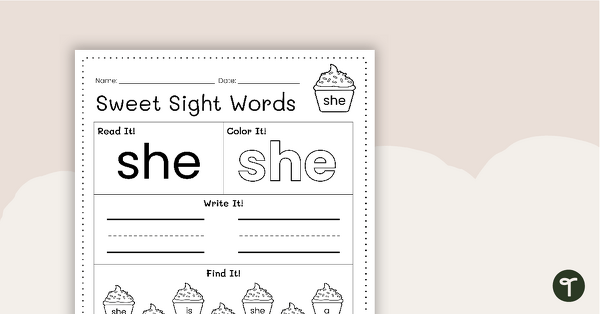
Sweet Sight Words Worksheet - SHE
Practice reading, writing, and identifying the high-frequency word “she” from the Kindergarten-level Dolch sight words list.
- Plus Plan
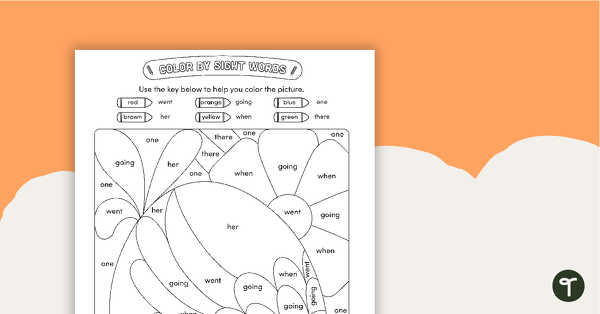
Color by Sight Words - 6 Words - Chicken
A fun coloring activity to use when working with sight words.
- Plus Plan
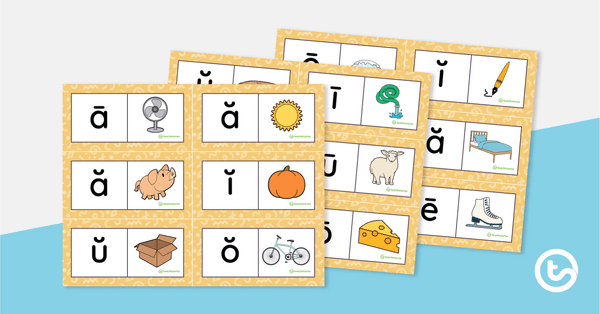
Long and Short Vowel Sounds Dominoes
Distinguish between long and short vowel sounds with this set of 28 dominoes.
- Plus Plan
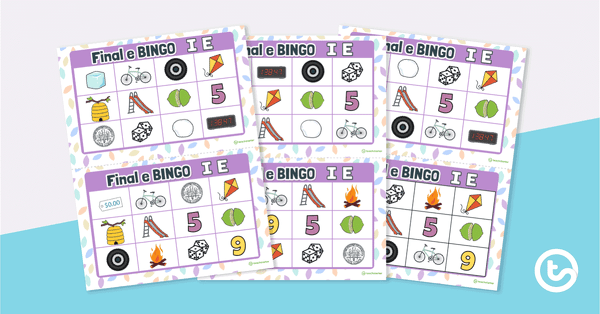
Final e BINGO - I_E
Decode final e words with the long i vowel sound using this set of 20 bingo game boards.
- Plus Plan

Final e BINGO - A_E
Decode final e words with the long a vowel sound using this set of 20 bingo game boards.
- Plus Plan
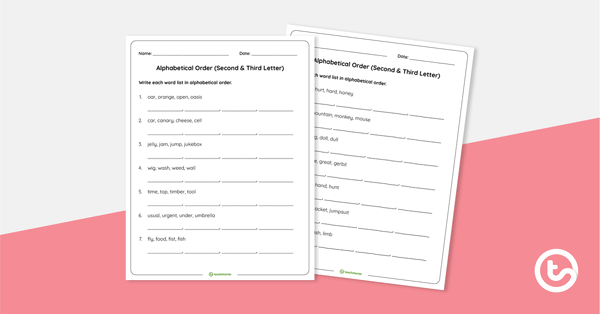
Alphabetical Order Worksheet (Second and Third Letter)
Strengthen alphabetization skills to the third letter with this 2-page worksheet.
- Plus Plan
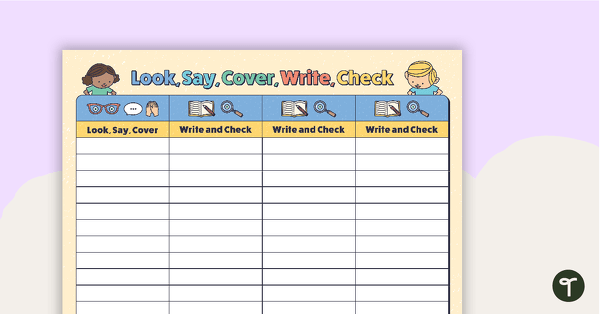
Look, Say, Cover, Write, Check Template (12 Words)
A template to use when learning spelling words.
- Plus Plan
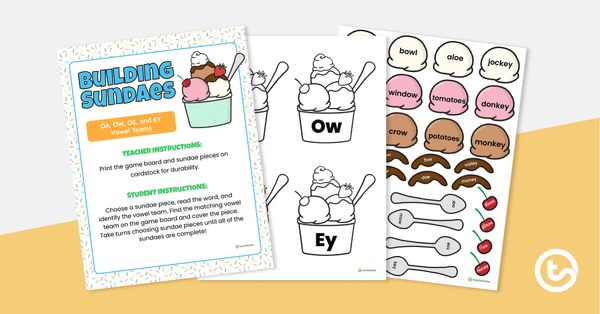
Building Sundaes Game - Vowel Teams (OA, OW, OE, and EY)
Decode words with OA, OW, OE, and EY long vowel teams by crafting cute desserts!
- Plus Plan
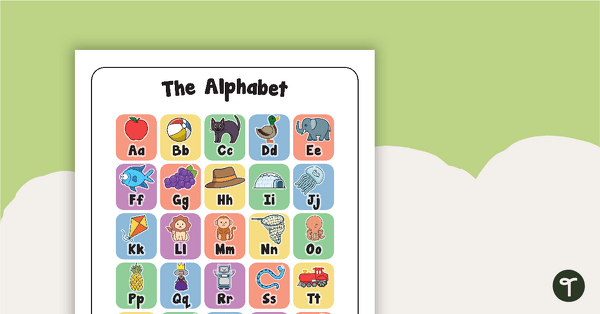
Alphabet Display Poster
A bright and colorful poster to display when introducing the letters of the alphabet.
- Plus Plan
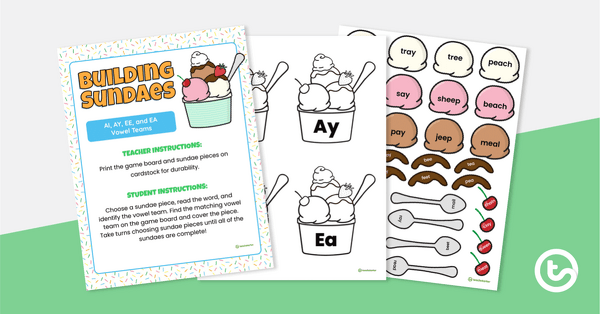
Building Sundaes Game - Vowel Teams (AI, AY, EE, and EA)
Decode words with ay, ai, ea, and ee long vowel teams by crafting cute desserts!
- Plus Plan
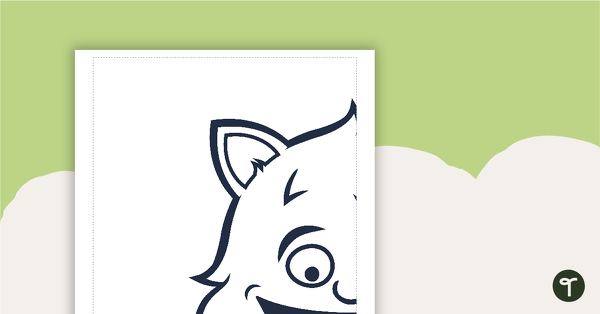
Curious Creature Create-a-Book-Cover Template
A template to help students create a curious creature book cover.
- Plus Plan
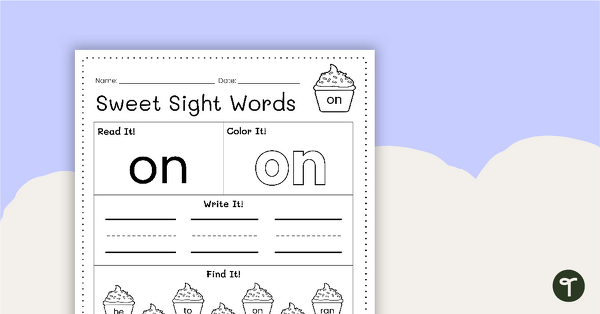
Sweet Sight Words Worksheet - ON
Practice reading, writing, and identifying the high-frequency word “on” from the Kindergarten-level Dolch sight words list.
- Plus Plan
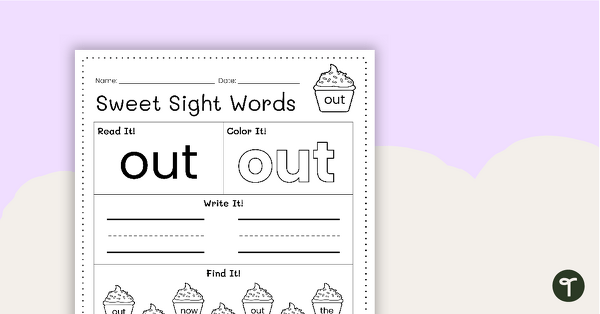
Sweet Sight Words Worksheet - OUT
Practice reading, writing, and identifying the high-frequency word “out” from the Kindergarten-level Dolch sight words list.
- Plus Plan
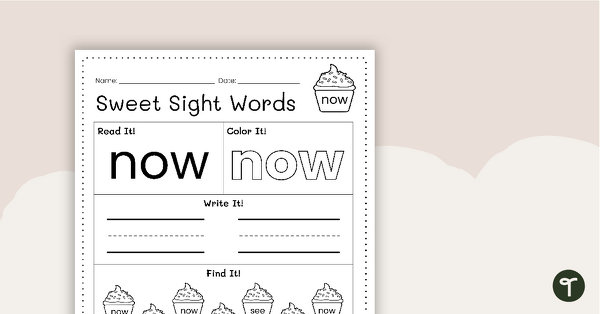
Sweet Sight Words Worksheet - NOW
Practice reading, writing, and identifying the high-frequency word “now” from the Kindergarten-level Dolch sight words list.
- Plus Plan
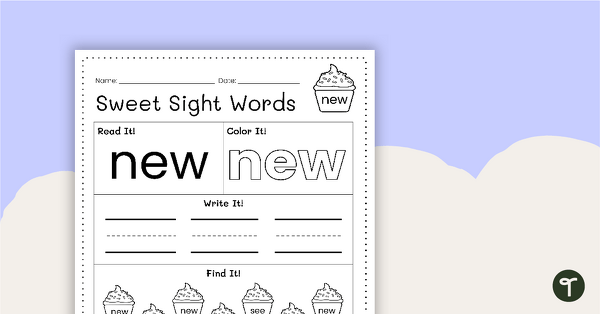
Sweet Sight Words Worksheet - NEW
Practice reading, writing, and identifying the high-frequency word “new” from the Kindergarten-level Dolch sight words list.
- Plus Plan
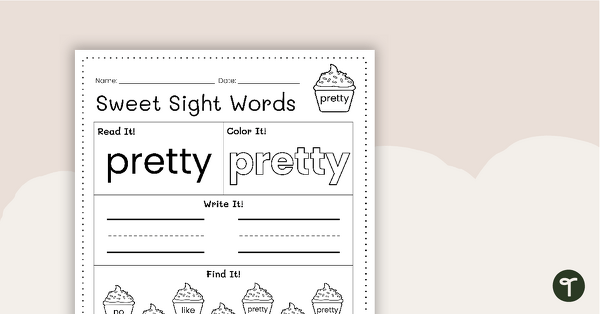
Sweet Sight Words Worksheet - PRETTY
Practice reading, writing, and identifying the high-frequency word “pretty” from the Kindergarten-level Dolch sight words list.
- Plus Plan
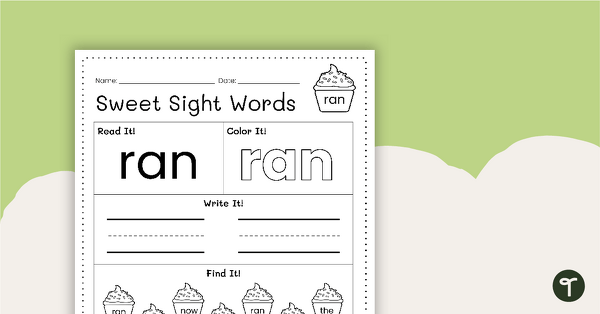
Sweet Sight Words Worksheet - RAN
Practice reading, writing, and identifying the high-frequency word “ran” from the Kindergarten-level Dolch sight words list.